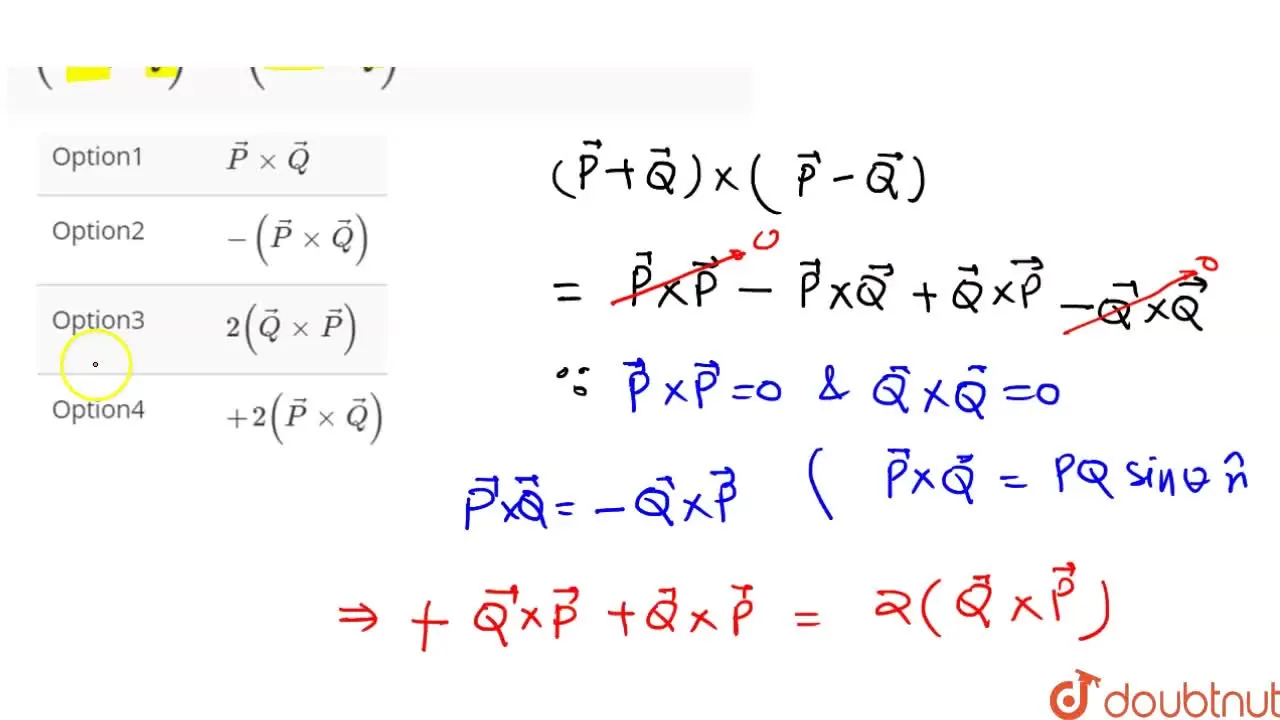If →Pand→Q are two vectors, then the value of (→P+→Q)×(→P−→Q) is
→P×→Q
−(→P×→Q)
2(→Q×→P)
+2(→P×→Q)
The correct Answer is:C
(→P+→Q)×(→P−→Q)
=→P×→P−→P×→Q+→Q×→P−→Q×→Q
But →P×→P=→Q×→Q=0and→P×→Q=−→Q×→P
∴(→P+→Q)×(→P−→Q)
=0+→Q×→P+→Q×→P−0
=2(→Q×→P)
Related Playlists
Similar Questions
Two vectors →P and →Q
View SolutionWhat is the angle between →P and the resultant of (→P+→Q) and (→P−→Q)
View SolutionIf →a,→b,→c are three non- coplanar vectors and →p,→q,→r are vectors defined by the relations →p=→b×→c[→a→b→c],→q=→c×→a[→a→b→c],→r=→a×→b[→a→b→c], then the value of expression (→a+→b).→p+(→b+→c).→q+(→c+→a).→r is equal to
View SolutionIf →P×→Q=→R,→Q×→R=→P and →R×→P=→Q then
View SolutionWhat is the anlge between →P×→Qand→Q×→P is
View SolutionIf →pand →q are two unit vectors and the angle between them is 60∘ then (1+→p.→q)(1−→p.→q) is ?
View SolutionWhat can be the angle between (→P+→Q) and (→P−→Q) ?
View SolutionLet →a,→b,→c be three non coplanar vectors , and let →p,→q and →r be the vectors defined by the relation
→p=→b×→c[→a→b→c],→q=→c×→a[→a→b→c] and →r=→a×→b[→a→b→c]
Then the value of the expension
(→a+→b).→p+(→b+→c).q+(→c+→a).→r is equal toView SolutionIf →P=(a+1)ˆi+aˆj+aˆk →Q=aˆi+(a+1)ˆj+aˆk →R=aˆi+aˆj+(a+1)ˆk →P,→Q,→R are coplanar vectors and 3(→P.→Q)2−λ∣∣→R×→Q∣∣2=0 then value of λ is
View SolutionIf →p+→q+→r=x→s and →q+→r+→s=y→p and are →p,→q,→r non coplaner vectors then |→p+→q+→r+→s|=
View Solution


